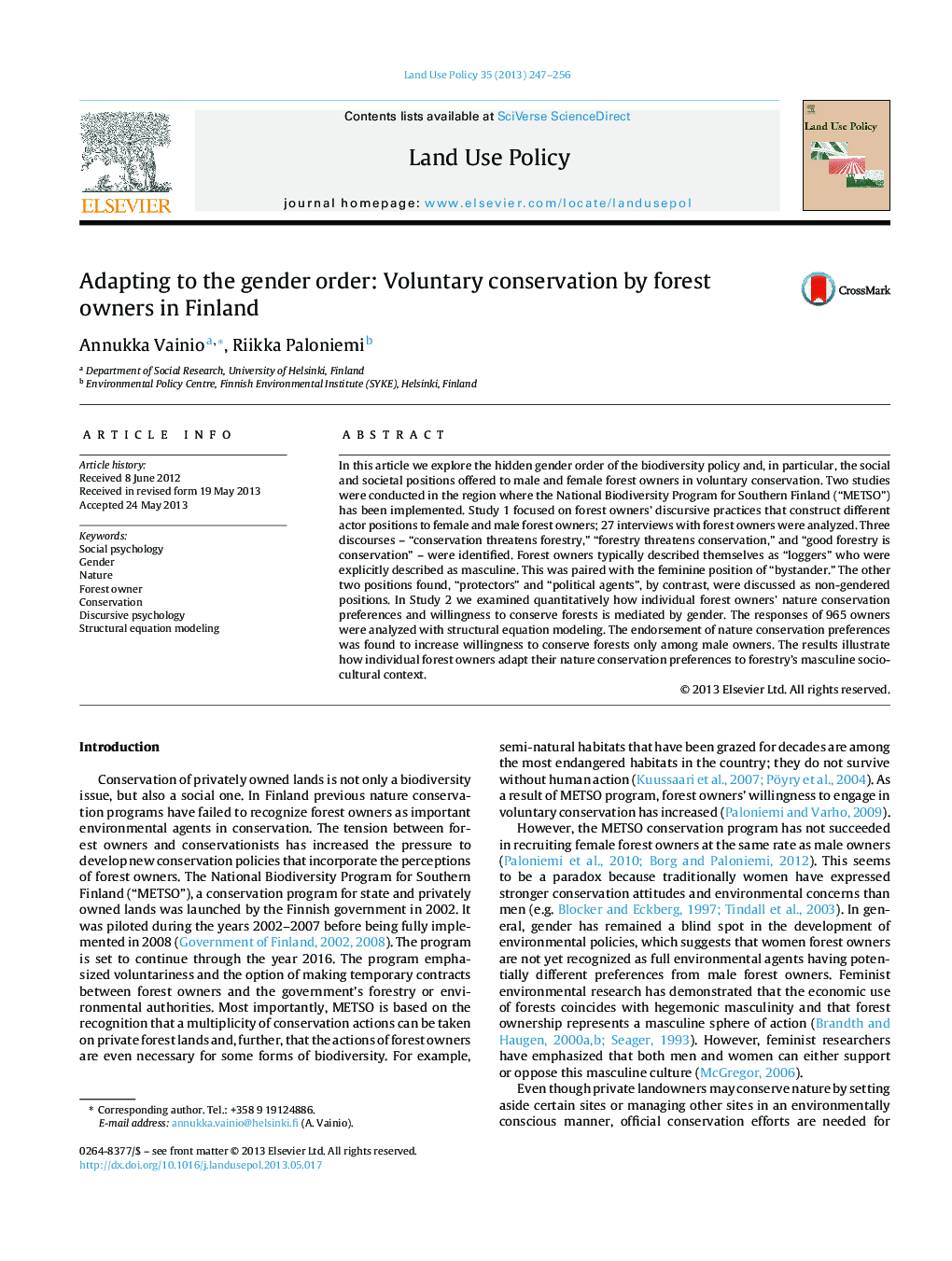| کد مقاله | کد نشریه | سال انتشار | مقاله انگلیسی | نسخه تمام متن |
|---|---|---|---|---|
| 93182 | 160116 | 2013 | 10 صفحه PDF | دانلود رایگان |
• Forest owners’ discourses provided both gendered and non-gendered subject positions.
• Conservation preferences increased willingness to conserve forests only among males.
• Individual women and men preferred to support masculine gender order in forestry.
In this article we explore the hidden gender order of the biodiversity policy and, in particular, the social and societal positions offered to male and female forest owners in voluntary conservation. Two studies were conducted in the region where the National Biodiversity Program for Southern Finland (“METSO”) has been implemented. Study 1 focused on forest owners’ discursive practices that construct different actor positions to female and male forest owners; 27 interviews with forest owners were analyzed. Three discourses – “conservation threatens forestry,” “forestry threatens conservation,” and “good forestry is conservation” – were identified. Forest owners typically described themselves as “loggers” who were explicitly described as masculine. This was paired with the feminine position of “bystander.” The other two positions found, “protectors” and “political agents”, by contrast, were discussed as non-gendered positions. In Study 2 we examined quantitatively how individual forest owners’ nature conservation preferences and willingness to conserve forests is mediated by gender. The responses of 965 owners were analyzed with structural equation modeling. The endorsement of nature conservation preferences was found to increase willingness to conserve forests only among male owners. The results illustrate how individual forest owners adapt their nature conservation preferences to forestry's masculine socio-cultural context.
Journal: Land Use Policy - Volume 35, November 2013, Pages 247–256
